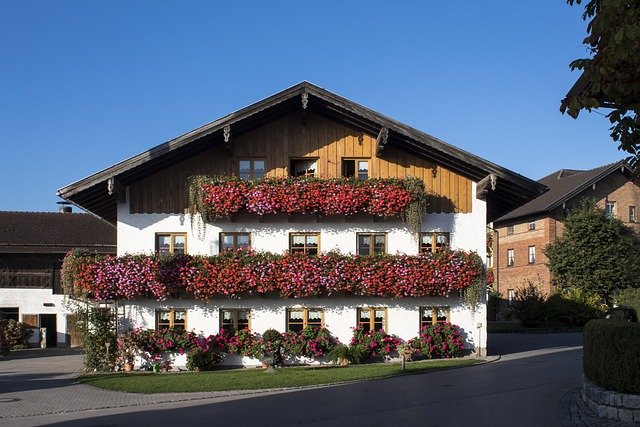Hi, today, I want to give you a few ideas on what plants you can plant on your balcony in fall that will provide a beautiful pop of color and that will not die with the first frost. Let’s talk about fall plants that are available at the garden centers right now, that you can buy and make your balcony look beautiful this fall.
Heathers and Heaths
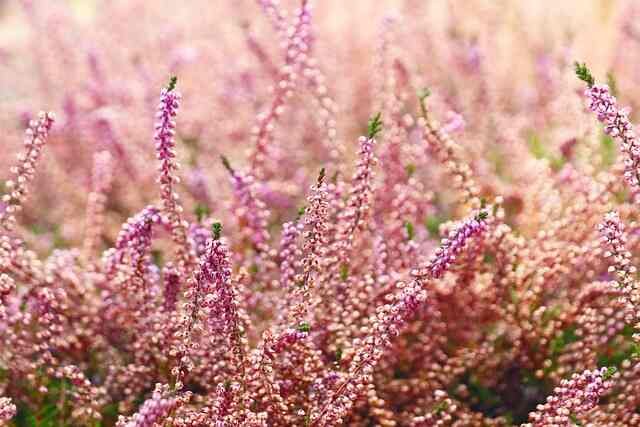
Okay, let’s start with some classics, Heathers and Heaths. I don’t have Heaths because at the garden center they only had green ones and I didn’t want a green one. So, Heathers and Heaths—they are classics. When I think about fall, I think about these plants. They are very similar, and for me, they are a little bit like geraniums and pelargoniums in the way that no one knows which one is which, and we keep using their names alternately. They are both very similar, and the maintenance is similar as well. They are perennials, so you can keep them and grow them for many years. They are also very winter hardy, so they will look great all the way until spring. But if you did ever buy these plants and you planted them on your balcony and they died during winter, it would be a mistake to assume that they died because of frost.
The trick is that these plants are ericaceous, so it means they need an ericaceous potting mix, which has a low pH. If you plant them in a universal potting mix that has either neutral to slightly alkaline pH, what happens is that certain nutrients are only available at certain pH levels. For example, iron is only available at lower pH levels, so if you plant them in a higher pH level, those nutrients become unavailable to them. They can’t absorb them, and they literally die of starvation—they die of nutrient deficiency.
If you think, “Well, I don’t want to buy an ericaceous potting mix just to plant this one plant,” there are actually a lot of plants that either like acidic soil or don’t mind acidic soil. You can definitely mix Heathers and Heaths with other plants in that ericaceous potting mix. I’m going to talk about those plants in a minute.
Decorative Cabbages
Next is a truly interesting gathering of plants, which are elaborate cabbages. They are really so lovely. They are consumable, however it’s not prescribed to eat them in light of the fact that, clearly, they were reared to look delightful, not to taste pleasant, so just use them for decorative purposes. They are really lovely and look pleasant with different plants and pieces or even all alone. In the event that you have more modest pots, you can simply pot a few pots of fancy cabbages — I feel that looks truly cool too. They are very winter strong, so ice won’t harm them. On the off chance that the more seasoned leaves get somewhat appalling, you can simply pull them off, and afterward the new leaves will continue to show up. They will seem to be this until spring, and in spring, when the weather conditions begins to heat up, they will begin to sprout.That is extremely engaging considering the way that they will start to foster progressively tall like a little zenith of cabbage, and a short time later they have those beautiful spikes of yellow blooms that attract pollinators without skipping a beat in spring. Thus, that is additionally truly incredible in light of the fact that they will accommodate pollinators when there is very little else sprouting around then.
Thus, most certainly, cabbage is likewise an incredible plant to establish on your gallery to add to structures or just to plant all alone. Decorative cabbages really lean toward lower soil pH, so you can establish them with Heathers and Heaths in that ericaceous preparing blend we just talked about. They look truly lovely next to each other.
Cyclamen
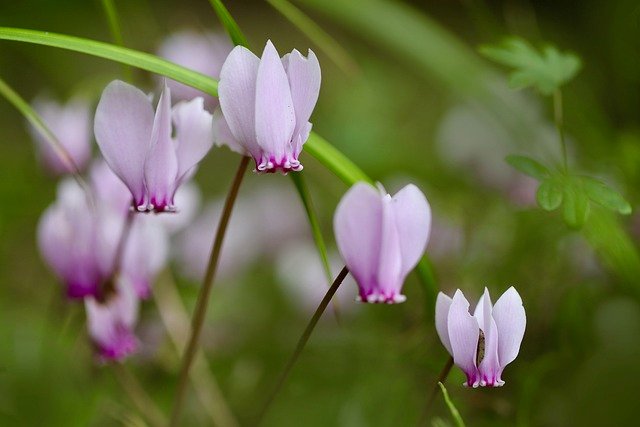
Okay, the next beautiful plant to plant on your balcony in fall is Cyclamen, but be careful here because there are different types of Cyclamens, different species of Cyclamen. A lot of the times, e a little bit larger cyclamens. There are even bigger ones than this. For example, this one is called Cyclamen persicum. You can plant them on your balcony in fall—they will look beautiful, but they are not very frost-hardy. They may tolerate some light frost, and if you live in a mild climate—for example, I garden in zone 8b—some of them tend to survive winter for me. I have grown them in the past, and they did survive frost, but theoretically, they are not frost-hardy. So, if you are searching for some cyclamen that will survive frost and look great even throughout winter and all the way till spring, there are some species of perennial cyclamens. If you go to the garden center, do ask about perennial cyclamens if you want to grow them for many years. Here, I have Cyclamen hederifolium, ivy-leaf Cyclamen. They are smaller. The blooms are smaller than those frost-tender cyclamens, but they are equally cute, and they look really lovely in a real garden situation when you plant them in a drift in sort of a woodland garden theme or shade garden—I think that looks really pretty. But you can sort of replicate that on your balcony. If you either plant several of them in one larger container or if you plant them in a smaller container and just dot them all around your balcony, I think that looks really pretty.
Heuchera

The next one is one of my all-time favorite plants, which is Heuchera. Honestly, if I were to grow only one plant on my balcony, it would be this one. They come in such a range of colors—they are just so pretty. You can find colors all the way from green and yellowish through purples and pinks and peaches and oranges all the way until black. So many colors—everyone will find something that they like, I think. They are perennial, they are very winter hardy, they are hardy down to zone 4. I mean, obviously, in pots, that hardiness is a little bit decreased because plants are more exposed, but nevertheless, they are very frost-hardy. They are evergreen, so they will keep that beautiful foliage all through the winter. I mean, if you live in a very cold climate, the leaves may start to look a little bit tired, a little bit ugly, but then you can just cut them off, and in spring, they will start to grow new, fresh, brightly colored leaves. They also bloom sometime at the beginning of summer with little bell-shaped flowers that pollinators absolutely love. So, that’s a really great plant to plant either on its own or you can add it to compositions. You can also divide it really easily.If you just take it out of its pot and cut through, you have those little clumps that you can divide, you can propagate and have more of those gorgeous Heucheras. I have, I think, like five or six different Heucheras on my balcony, and I love every single one of them. So, that’s definitely a beautiful plant to add to your fall compositions. Then, in spring, you can just take it out of the composition and plant it on its own and enjoy it year-round and for many years to come.
Violas
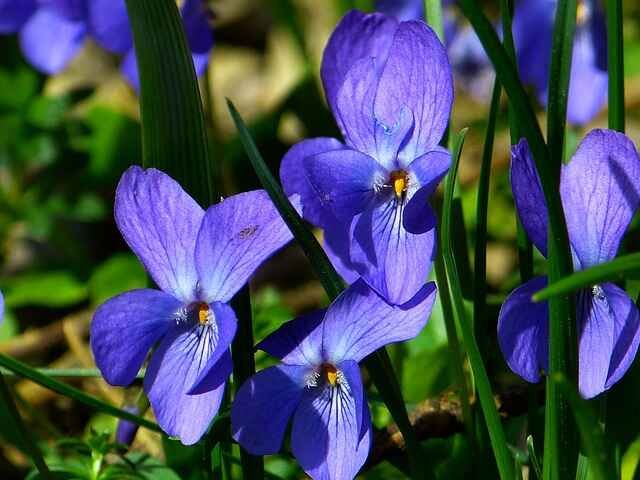
Next are violas, violas and pansies. Every pansy is a viola, but not every viola is a pansy. I know from you guys that in some areas, they are not available—in some countries where you live, they are not available in fall, they are only available in spring. So, the solution to that is to grow them from seeds. I enjoy growing them from seeds very much. I actually seeded some this year as well. Yet again, I was a little bit late, so my plants are still quite small, but they are really easy to grow from seeds. There are some lovely cultivars available. For example, this year, I’m growing some pansies with ruffled petals, which I can never find at the garden center, so I’m really excited to grow them this year. So, yeah, you can grow them easily from seeds. They are winter-hardy, although if it gets really frosty during the night, you will find them in the morning flopped and looking a little bit sad, but usually, during the day, they just come back and start to open their blooms again and look really pretty. They are winter-hardy, although if you live in a really, really cold climate, they may look a little bit sad indeed because of the frost. But as I said, they are still a great addition to your fall garden, and they will not die with the first frost. Just that they may not look the most attractive during winter if you live in a very, very cold climate.
Ivy

The next plant on my list is ivy. Ivy is a great trailing plant to add to your compositions. It’s super winter-hardy—it’s hardy down to, most ivies are hardy down to zone three. They are literally impossible to kill. They look great in fall compositions, and then in spring, you can take them out and you can grow them permanently on your balcony as a perennial plant. They are evergreen, so they will always provide that green foliage, that interest throughout the year. What I did with my ivy—that’s actually,I bought an ivy, I think maybe two or three years ago, and I grew it in a beautiful composition with pansies in a basket. Then, I didn’t want to get rid of it in spring, so I bought an obelisk, this cone-shaped obelisk, and I planted ivy all around at the bottom. I trained it to grow on top of this obelisk, and now I have this lovely cone-shaped topiary. I really love it because it provides height, it provides interest year-round, it’s very resistant, drought-tolerant, frost-hardy. You can also take cuttings—it propagates super easily from cuttings. So, if next year again, you will need some ivy to add to your compositions, you can just take cuttings ahead of time, put them either in water or directly in soil—they propagate super easily. So, yeah, definitely a great plant to have on your balcony. Multipurpose, I would say. You can buy different shapes of obelisks or trellises, have fun with this, create some forms. I’ve seen people make some heart-shaped forms or some rounded circles and grow ivy on top of that—I think that’s really lovely. So, yeah, definitely a great plant to add to your balcony garden, and ivy also doesn’t mind the slightly acidic soil. It can tolerate basically any soil pH, so you can add it as a trailing plant in your composition with other ericaceous plants.
Chrysanthemum
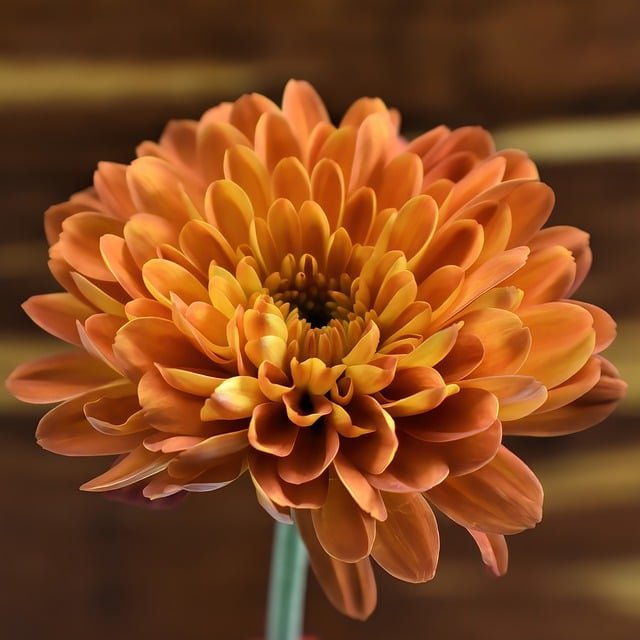
And the last one on my list today, is chrysanthemum. You can buy them in bloom already at the garden centers, I think, but mine is not in bloom yet because I grow them as perennials. So, I keep mine from year to year. They are amazing when you keep them from year to year because they bloom even better the next year. You can propagate them easily as well, although they are commonly available and they are not very expensive. So, of course, you can buy new ones every year, but I really like to keep some favorite varieties from year to year. The blooms are really large, and they look like fireworks. Most of the plants that I spoke about today, they are very winter-hardy, but chrysanthemums are not very winter-hardy. I mean, they will not die with the first frost, but in cold climates, they will definitely not survive winter. I garden in zone 8b, and I manage to keep them from year to year, and they don’t die during winter. Also, the older they are, the more resistant they become in my experience. They may not survive winter where you live, but they will definitely provide a beautiful pop of color in fall.
Okay, so that’s all the plants that I wanted to talk about today. Hope you enjoyed it, and I’ll see you again in the next article. Bye!

